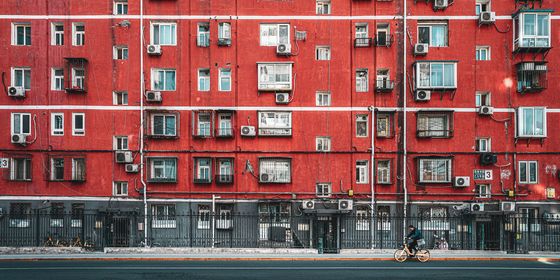China’s public libraries are vital but scarce resources for millions
An hour’s subway ride separates 28-year-old Su Ying from her home in Beijing’s southwestern Fengtai district and what she calls her “hiding” place: the Chaoyang District Library. Her parents don’t know that she was laid off from her job at an education company last December and that she now spends nearly every day at public libraries working on job applications and studying for the national postgraduate exam.
At 10:30 a.m., Su’s usual spot is occupied, forcing her to walk around the library for some time before finding a seat. Surrounding her today, as usual, are people from all walks of life: a middle-aged man in a black suit staring at stock prices on his computer screen; another reading a book about Buddhism and the news on his phone at the same time, a soda in hand. A woman in her 20s is taking notes while watching an online class, and getting annoyed at music filtering through the headphones of a nearby young woman who is watching a TV show on her phone.
For Su, and millions of other ordinary people in China, the country’s 3,212 public libraries (as of the end of 2020, according to statistics of the Ministry of Culture and Tourism) are ideal places for passing time with free wifi, as is now often the case. For the down-on-their-luck or vulnerable, the library can be an escape from overcrowded living conditions, or even a shelter from domestic violence and natural disasters in a nation where such facilities are still in short supply.
But while growing in number and becoming more comprehensive in their services, China’s libraries have yet to meet all the needs of its population. There is just one library for every 438,000 people in China, and most libraries are concentrated in urbanized, economically developed areas (for comparison, the ratio in the US is 1 to 36,000 people). Pandemic restrictions, funding shortages, and concerns for public order have also prevented many libraries from serving as wide a community as they might wish.
Before she discovered libraries, Su’s go-to hangout was a Starbucks near her former office in Chaoyang district. She would buy a coffee and spend a whole day there applying for jobs, reading the news, and watching TV shows. This cost her at least 50 yuan per day, and after 20 consecutive days, she looked for cheaper alternatives in parks, KFC restaurants, and milk tea shops.
A friend finally told her about the National Library in Beijing, which attracted her because it was “free, air-conditioned, and quiet,” Su tells TWOC.
Reading Spaces: How did Libraries Become Safe Havens for China’s Vulnerable? is a story from our issue, “Public Affairs.” To read the entire issue, become a subscriber and receive the full magazine.













